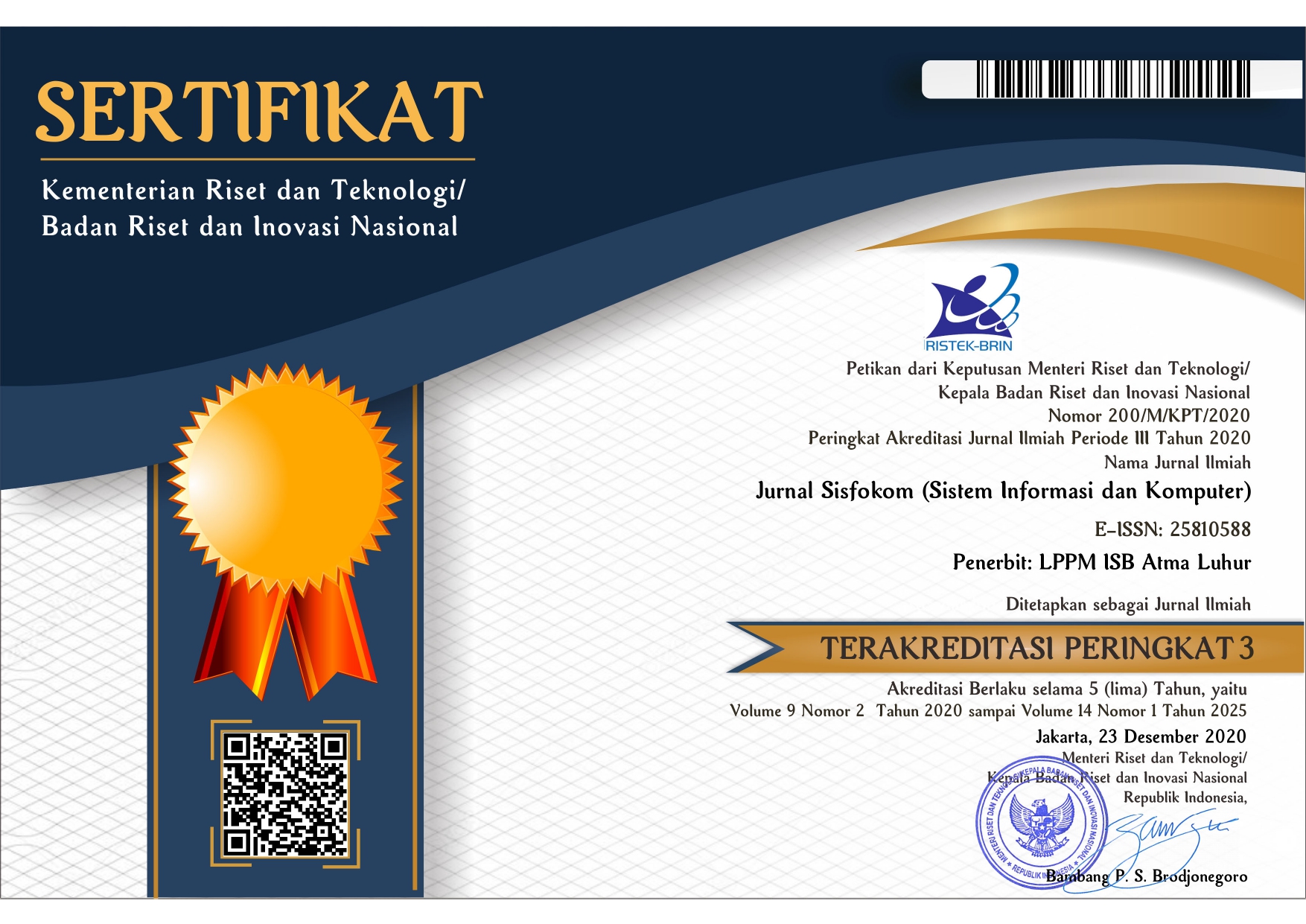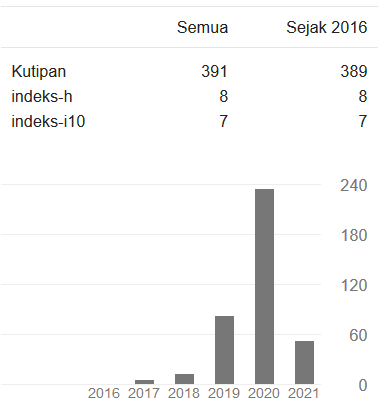Klasifikasi Ketertarikan Belajar Anak PAUD Melalui Video Ekspresi Wajah Dan Gestur Menggunakan Convolutional Neural Network
DOI:
https://doi.org/10.32736/sisfokom.v10i2.1146Keywords:
Kindergarten, Facial Expression, Gesture.Abstract
Abstract—The Covid-19 pandemic has transformed the offline education system into online. Therefore, in order to maximize the learning process, teachers were forced to adapt by having presentations that attract student's attention, including kindergarten teachers. This is a major problem considering the attention rate of children at early age is very diverse combined with their limited communication skill. Thus, there is a need to identify and classify student's learning interest through facial expressions and gestures during the online session. Through this research, student's learning interest were classified into several classes, validated by the teacher. There are three classes: Interested, Moderately Interested, and Not Interested. Trials to get the classification of student's learning interest by teacher validation, carried out by training and testing the cut area of the center of the face (eyes, mouth, face) to get facial expression recognition, supported by the gesture area as gesture recognition. This research has scenarios of four cut areas and two cut areas that were applied to the interest class that utilizes the weight of transfer learning architectures such as VGG16, ResNet50, and Xception. The results of the learning interest classification test obtained a minimum validation percentage of 70%. The result obtained through scenarios of three learning interest classes four cut areas using VGG16 was 75%, while for two cut areas using ResNet50 was 71%. These results proved that the methods of this research can be used to determine the duration and theme of online kindergarten classes.References
Soemiarti Patmonodewo, “Pendidikan Anak Prasekolah,” (Jakarta: PT.Rineka Cipta, 2003), Cet. 2, hlm. 19.
Lift Anis Ma’shumah, “Pembinaan Kesadaran Beragama Pada Anak, dalam Ismail SM (eds), Paradigma Pendidikan Islam,” (Yogyakarta: Pustaka Pelajar, 2001), hlm. 216-217.
F. Nurmalitasari, P. M. Psikologi, F. Psikologi, and U. Gadjah, “Perkembangan Sosial Emosi pada Anak Usia Prasekolah,” vol. 23, No. 2, pp. 103–111, 2015.
K Amda, R Fitriyani, “Membaca Ekspresi Wajah,” Huta Publisher, Depok, 2016, hlm.17.
R. Cui, M. Liu, “Facial Expression Recognition Based on Ensemble of Mulitple CNNs”. Springer International Publishing AG 2016, pp. 511–518.
Y. F. B, J. C. K. Lam, and V. O. K. Li, “Multi-region Ensemble Convolutional Neural Network for Facial Expression Recognition”. Springer International Publishing, 2018.
K. Liu, M. Zhang, Z. Pan, “Expression Recognition with CNN Ensemble”. International Conference on Cyberworlds, 2016.
P. V. Rouast, and M. T. P. Adam, “Learning Deep Representastions for Video-Based Intake Gesture Detection,” IEEE Journal of Biomedical and Health Informatics, vol. 24, pp. 1727-1737, 2020.
Samuel Sena, 2018. Pengenalan Deep Learning Part 8: Gender Classification using Pre-Trained Network (Transfer Learning) [Online] https://medium.com. [Diakses 24 Agustus 2021].
Tsang S., Review: VGGNet – 1st Runner-Up (Image Classification), Winner (Localization) in ILSVRC 2014 [Online] https://medium.com. [Diakses 26 Agustus 2021].
T. Muhammed., “Automated Classification of Histopathology Image Using Transfer Learning”, Elseivier: Artificial Intelligence in Medicine, 2019.
F. Chollet, “Xception: Deep Learning with Depthwise Separable Convolutions,” IEEE CVPR, vol. 2017, pp. 1800-1807, 2017.
Downloads
Published
Issue
Section
License
The copyright of the article that accepted for publication shall be assigned to Jurnal Sisfokom (Sistem Informasi dan Komputer) and LPPM ISB Atma Luhur as the publisher of the journal. Copyright includes the right to reproduce and deliver the article in all form and media, including reprints, photographs, microfilms, and any other similar reproductions, as well as translations.
Jurnal Sisfokom (Sistem Informasi dan Komputer), LPPM ISB Atma Luhur, and the Editors make every effort to ensure that no wrong or misleading data, opinions or statements be published in the journal. In any way, the contents of the articles and advertisements published in Jurnal Sisfokom (Sistem Informasi dan Komputer) are the sole and exclusive responsibility of their respective authors.
Jurnal Sisfokom (Sistem Informasi dan Komputer) has full publishing rights to the published articles. Authors are allowed to distribute articles that have been published by sharing the link or DOI of the article. Authors are allowed to use their articles for legal purposes deemed necessary without the written permission of the journal with the initial publication notification from the Jurnal Sisfokom (Sistem Informasi dan Komputer).
The Copyright Transfer Form can be downloaded [Copyright Transfer Form Jurnal Sisfokom (Sistem Informasi dan Komputer).
This agreement is to be signed by at least one of the authors who have obtained the assent of the co-author(s). After submission of this agreement signed by the corresponding author, changes of authorship or in the order of the authors listed will not be accepted. The copyright form should be signed originally, and send it to the Editorial in the form of scanned document to sisfokom@atmaluhur.ac.id.









